RN ADULT MEDICAL SURGICAL 2019 EXAM WITH CORRECT ANSWERS
Document Content and Description Below
RN ADULT MEDICAL SURGICAL 2019 EXAM WITH CORRECT ANSWERS Neurological event follow-up - Follow up on visual disturbances, tingling of the lips, hand grasps, and expressive aphasia. Testicular ... self-examination - Instruct the client to roll each testicle between the thumb and fingers to feel for any lumps deep in the center of the testicle. Hyperthyroidism assessment - Report blood pressure of 170/80 mm Hg to the provider as a priority finding. Muscle cramps and tingling sensation - Administer calcium carbonate to a client experiencing muscle cramps and tingling sensation in the hands. Seizure intervention - Turn the client to the side during a seizure to prevent aspiration. Medication to withhold prior to cardioversion - Instruct the client to withhold digoxin for 48 hr prior to cardioversion. Sildenafil and nitroglycerin - Inform the client that they cannot use sildenafil if they are taking nitroglycerin due to the risk of significant hypotension. Magnesium sulfate adverse effects - Monitor for respiratory paralysis as an adverse effect of magnesium sulfate. Erythropoietin therapy - Explain that the medication is taken to increase energy levels by increasing hematocrit and reducing fatigue. Chronic glomerulonephritis manifestation - Identify hyperkalemia as a manifestation of chronic glomerulonephritis. Feverfew interaction - Advise the client that naproxen interacts with feverfew and can increase the risk of bleeding. Colorectal cancer risk reduction - Recommend adding cabbage to the diet to help reduce the risk of colorectal cancer. Dysphagia bedside item - Place a suction machine at the client's bedside to clear the airway as needed and reduce the risk of aspiration. Contrast dye assessment - Further assess a client's history of asthma before a CT scan with IV contrast agent due to the risk of a reaction to the dye. Exophthalmos assessment - Identify image D as indicating exophthalmos in a client with Graves' disease. Role change risk - Recognize that a client with multiple sclerosis and progressive difficulty ambulating is at risk for experiencing a role change. Lactulose adverse effect - Identify hypokalemia as an adverse effect of lactulose due to excessive stools. Leg pain at rest - Pain in the legs that occurs when at rest Edema of the ankle - Swelling of the ankle Pericarditis - Inflammation of the pericardium Pericardial friction rub - Scratching or grating sound heard on auscultation of the chest Compartment syndrome - Early signs: intense pain with movement Compartment syndrome - Early signs: erythema of the toes Hemolytic transfusion reaction - Manifestation: chills Hemolytic transfusion reaction - Manifestation: back pain Hip dislocation prevention - Action: place two bed pillows between the legs when in bed Allergic cross-reactivity - Risk for allergy to bananas: latex Incentive spirometer - Instruction: hold breaths about 3 to 5 seconds before exhaling Serum potassium level - Intervention: initiate cardiac monitoring Peritoneal dialysis - Action: hang the drainage bag below the client's abdomen Vestibulocochlear nerve - Impaired function: disequilibrium with movement Open cholecystectomy - Intervention: apply compression stockings to the lower extremities Modified left radical mastectomy - Understanding: expect less than 25 mL of secretions per day in the drainage devices Metered-dose rescue inhaler - Statement: exhale fully before bringing the inhaler to your lips Total parenteral nutrition (TPN) - Finding: output 200 mL more than intake over the past 12 hr Sterile field maintenance - Actions: grasp 2.5 cm (1 in) of the outer edge to open the surgical wrap, place a surgical pack with a sterile drape on the work surface, select a work surface at the nurse's waist level Emergency surgery - Priority action: obtain consent for surgery Increased intracranial pressure - First sign of deteriorating neurological status: altered level of consciousness Skin cancer screening - Finding: flat lesion with irregular borders Diabetes insipidus - Medication: desmopressin Non-tunneled Central venous catheter insertion - Action: confirm the correct position of the line by obtaining a blood sample Chronic urinary tract infections - Instruction: drink 2 to 3 L of fluids daily HIV discharge teaching - Priority: describe your daily medication schedule Packed RBCs administration - Manifestation: stop the infusion Thoracentesis - Priority intervention: determine whether the client has an allergy to local anesthetics Bladder cancer - Action: instruct the client to avoid eating raw fruit Appendectomy - Finding: hemoglobin 10 mg/dL NG tube drainage assessment - Finding: the client's abdomen becomes distended and firm CT scan with contrast media - Medication to withhold for 48hr: metformin [Show More]
Last updated: 1 year ago
Preview 1 out of 19 pages
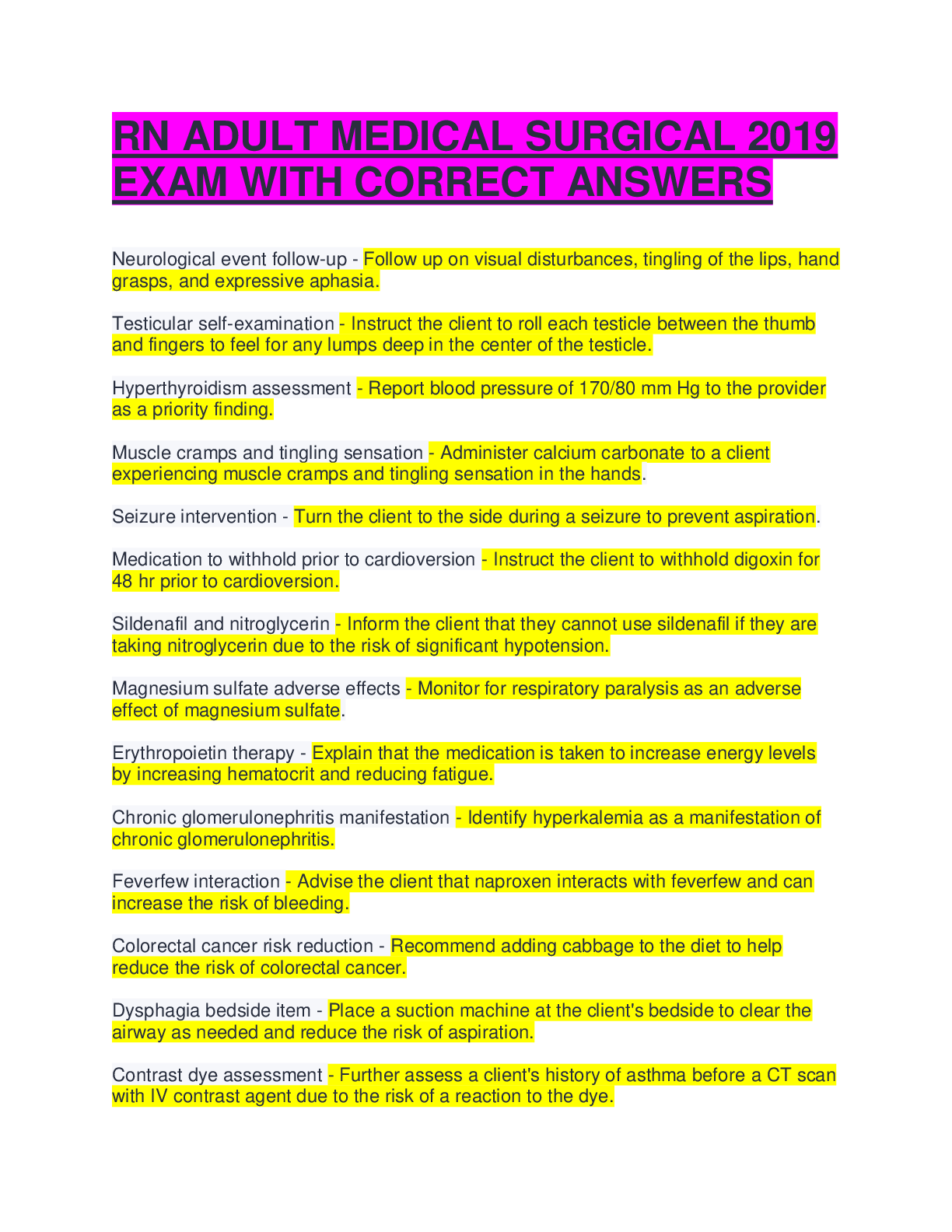
Buy this document to get the full access instantly
Instant Download Access after purchase
Buy NowInstant download
We Accept:

Reviews( 0 )
$13.00
Can't find what you want? Try our AI powered Search
Document information
Connected school, study & course
About the document
Uploaded On
Mar 26, 2024
Number of pages
19
Written in
Additional information
This document has been written for:
Uploaded
Mar 26, 2024
Downloads
0
Views
40




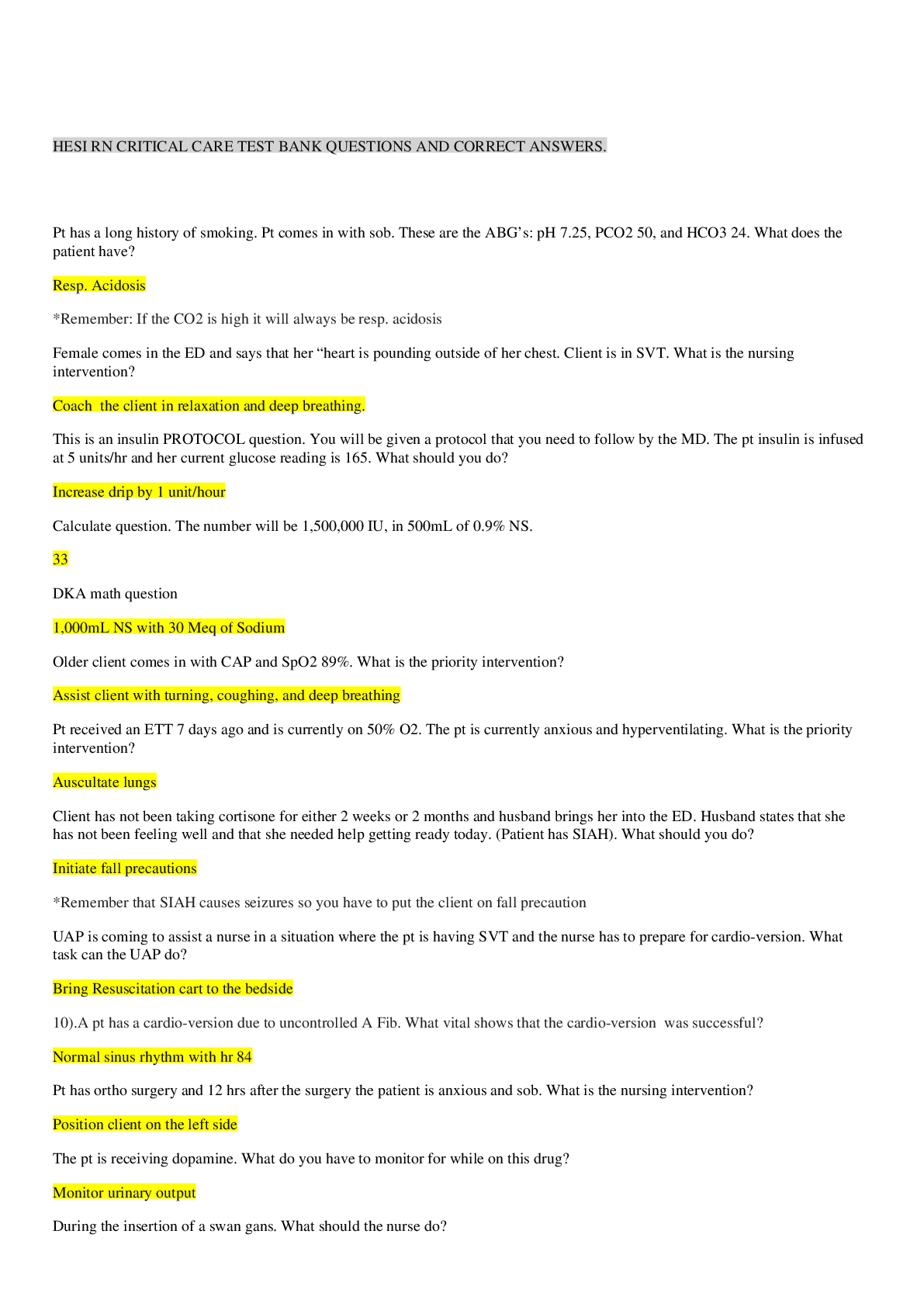
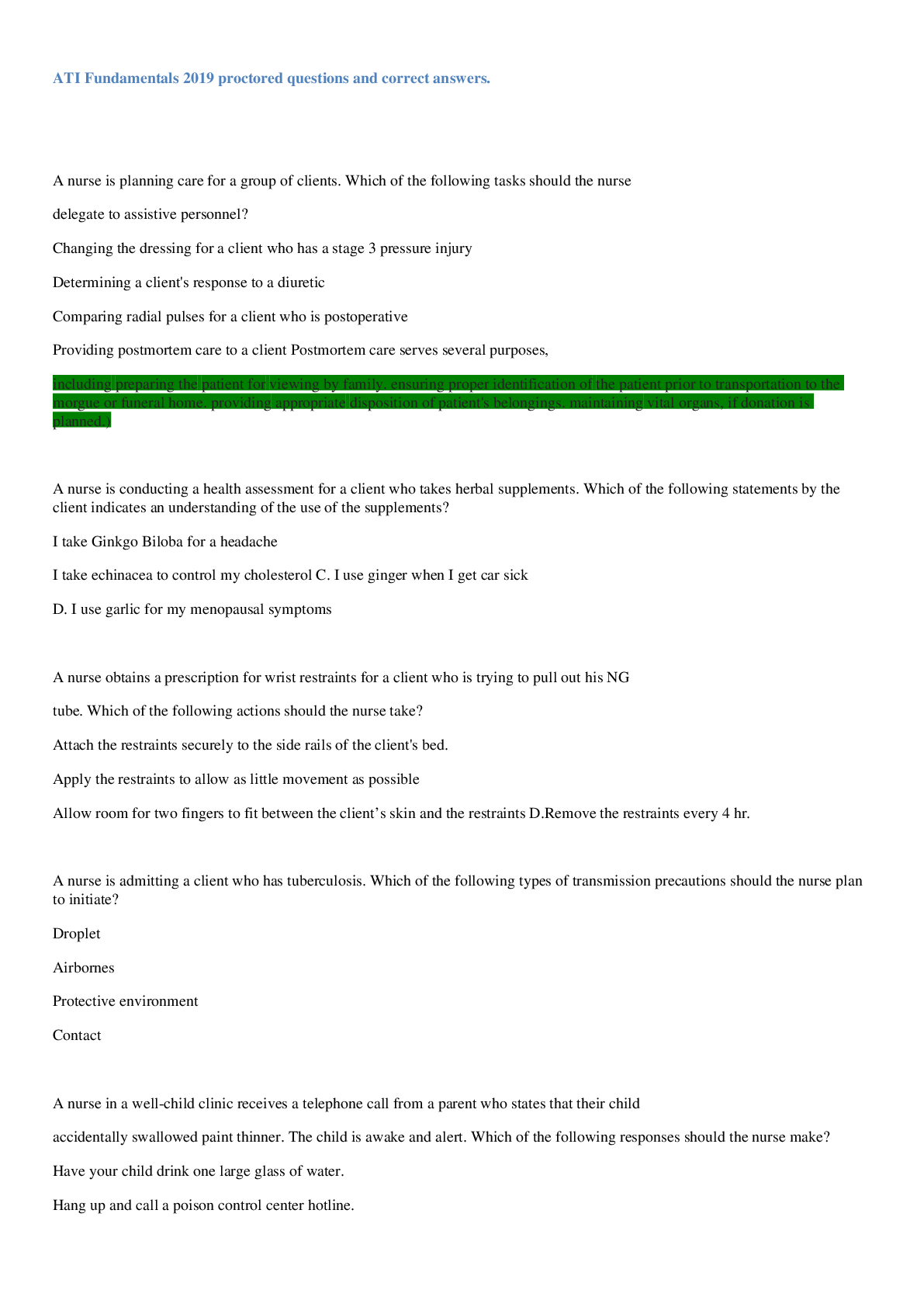
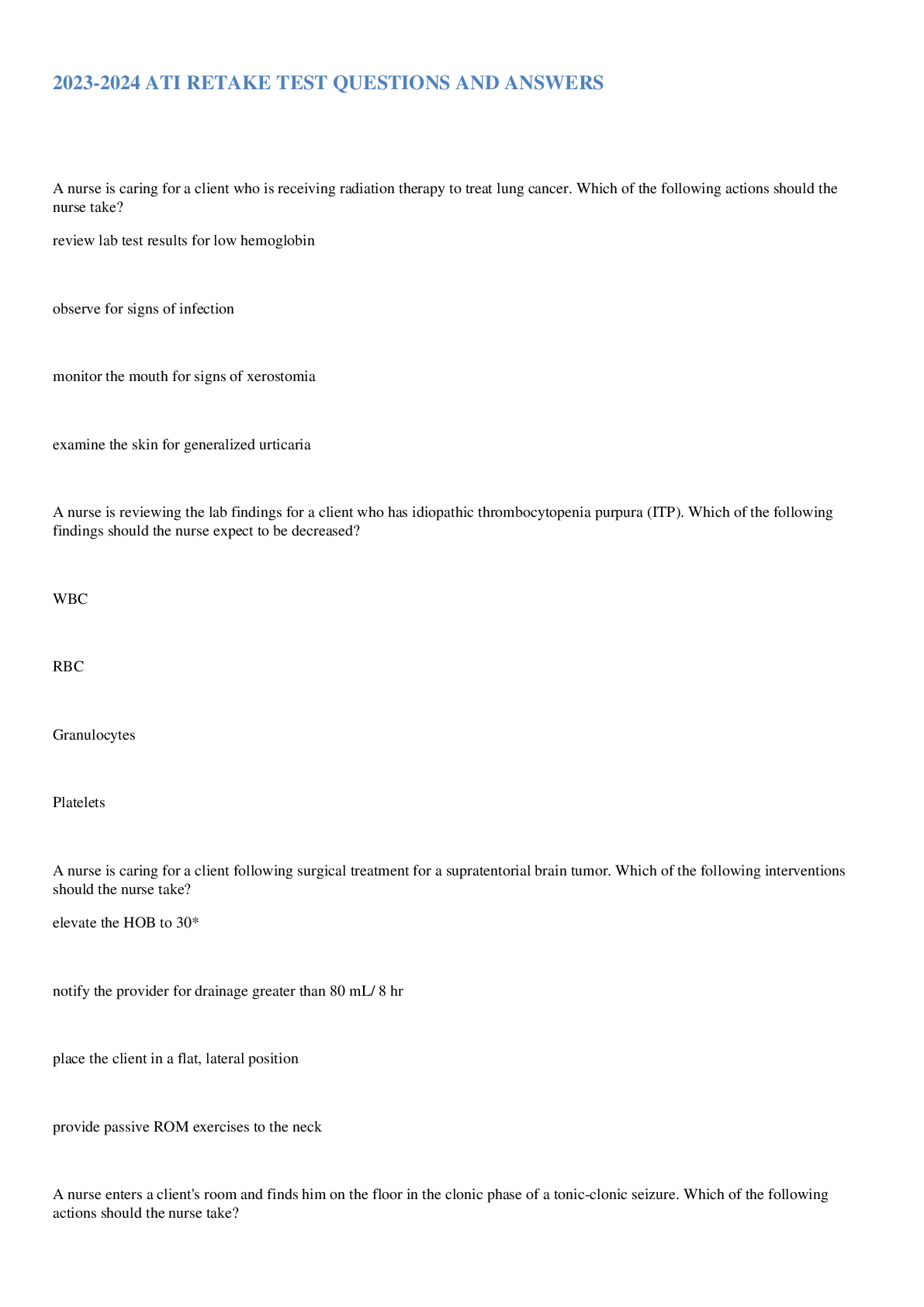
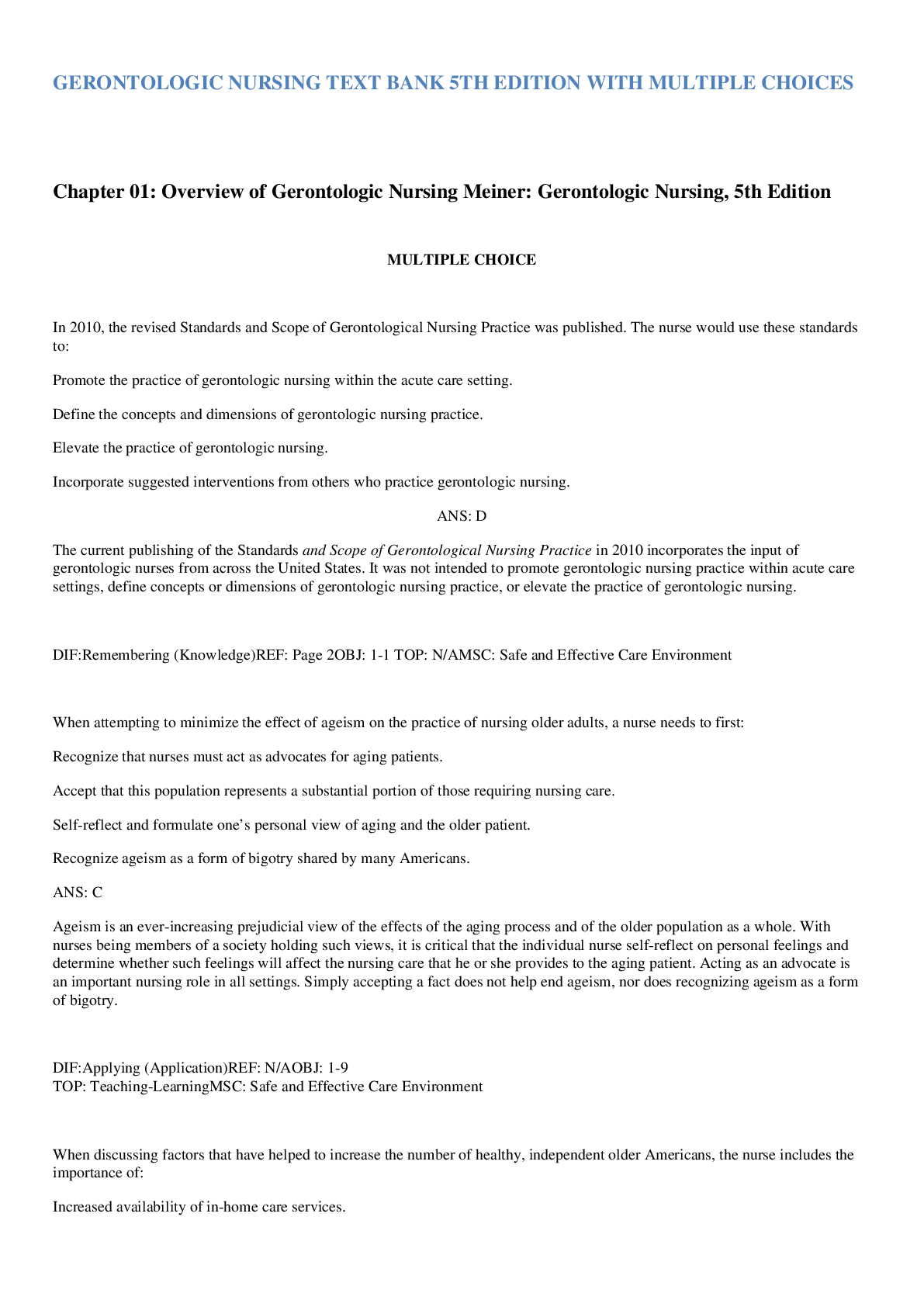
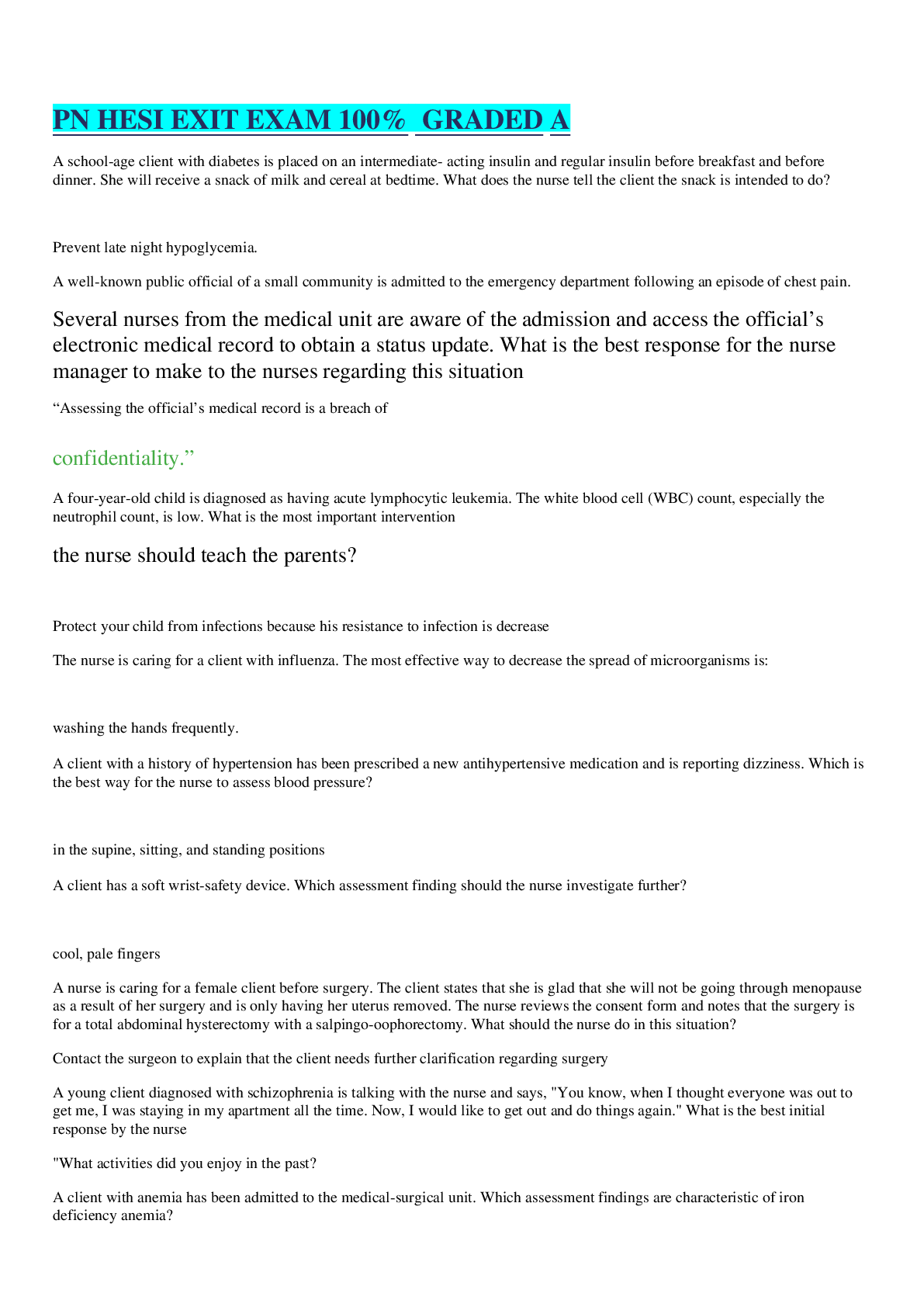
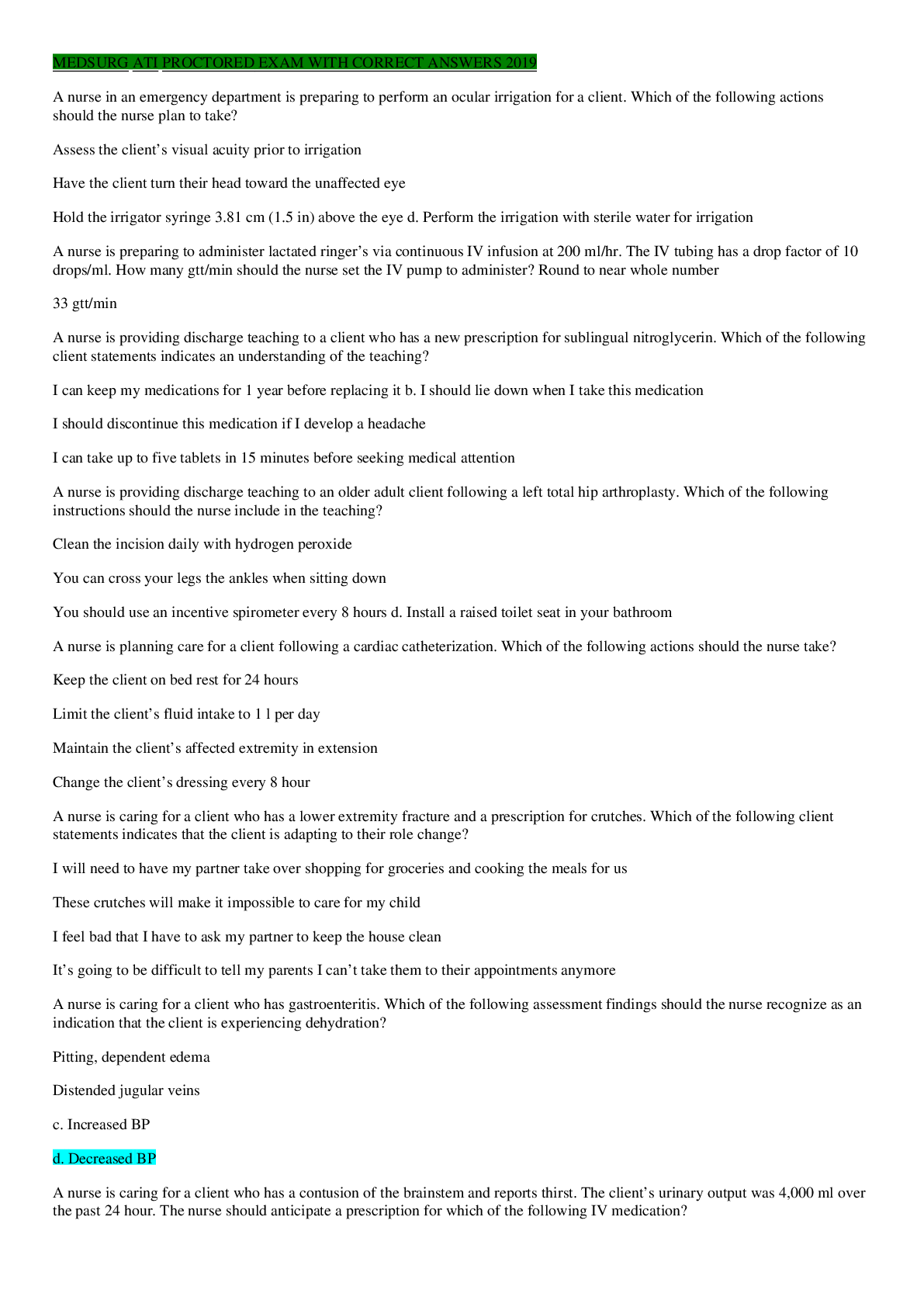
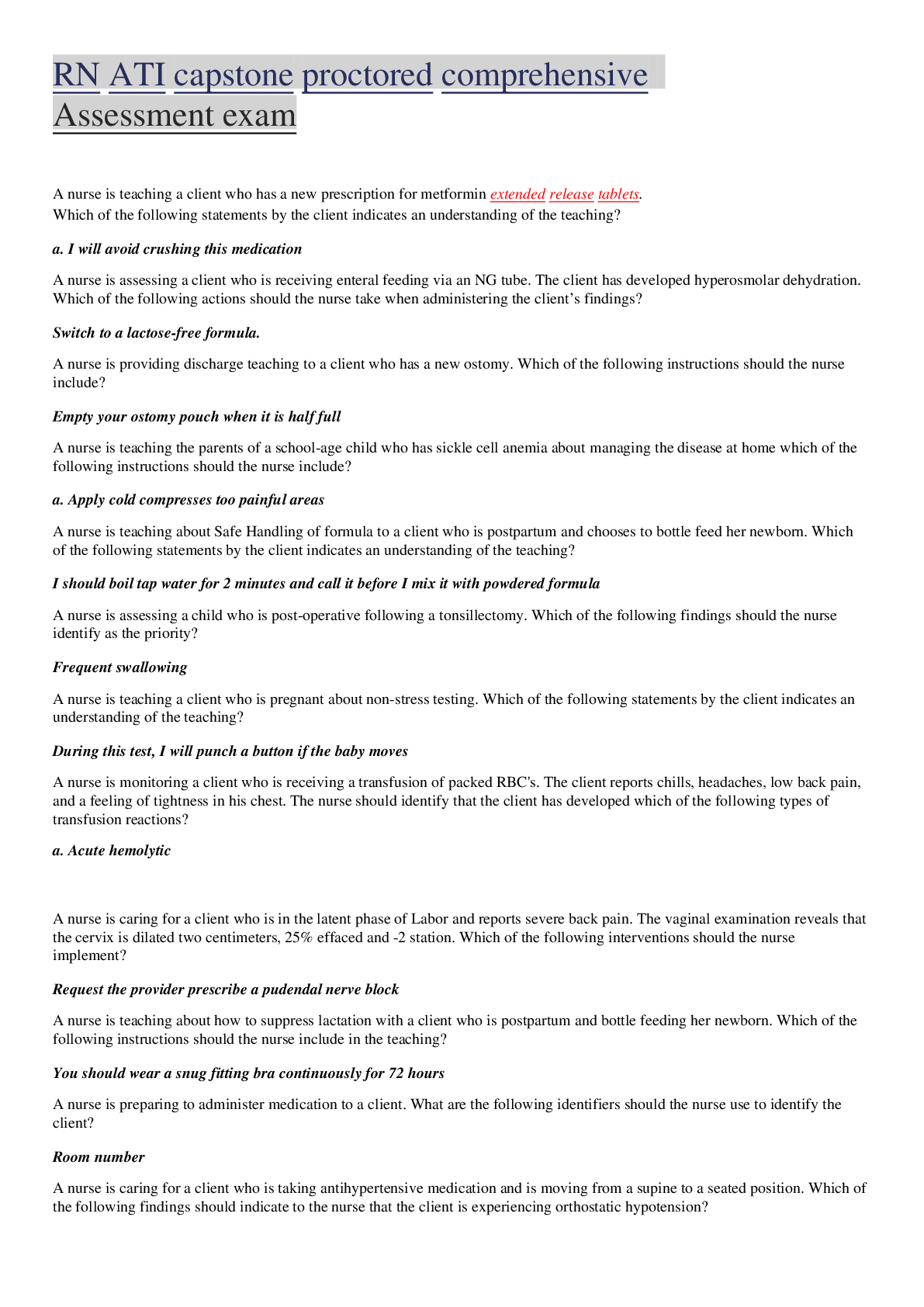
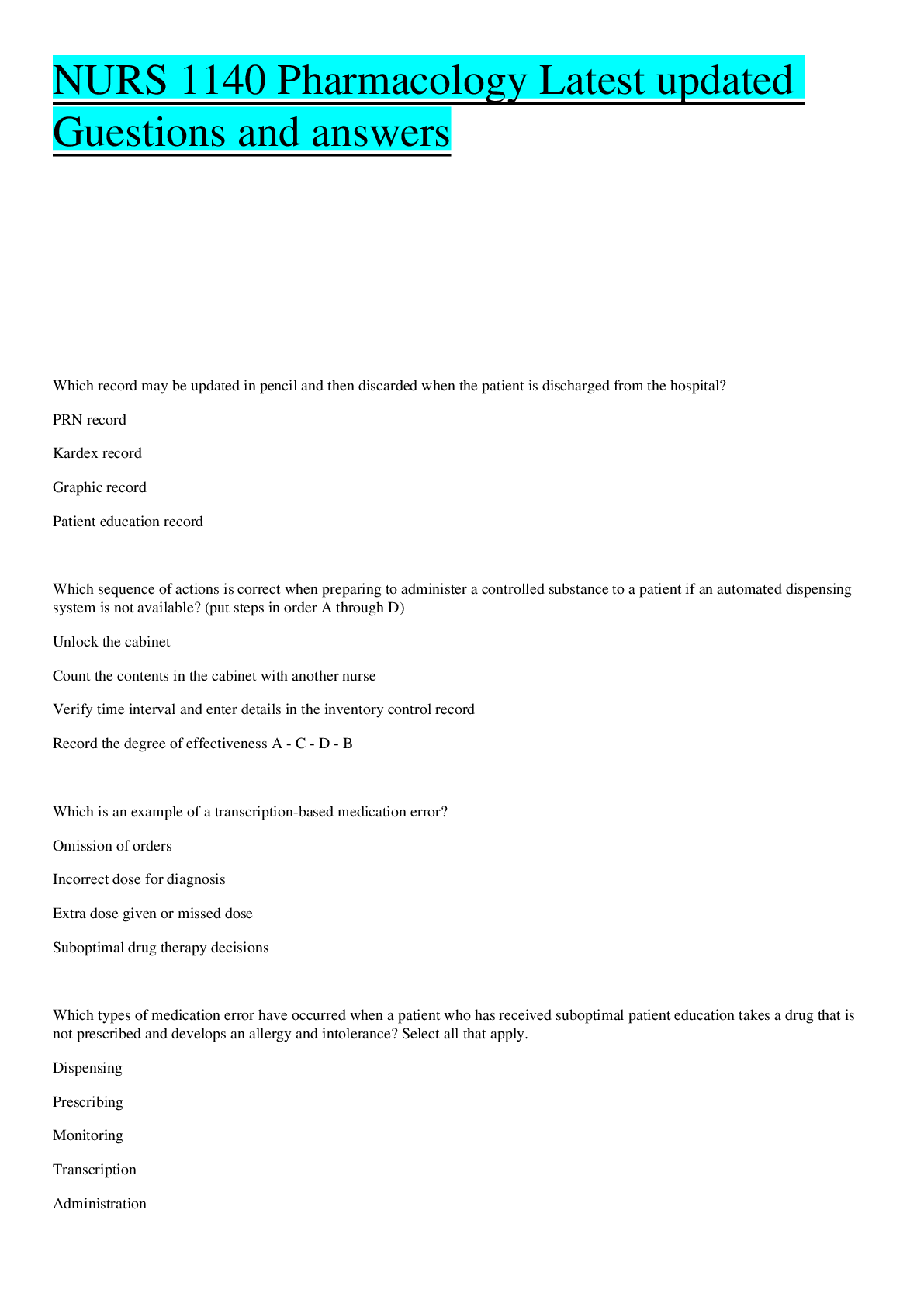
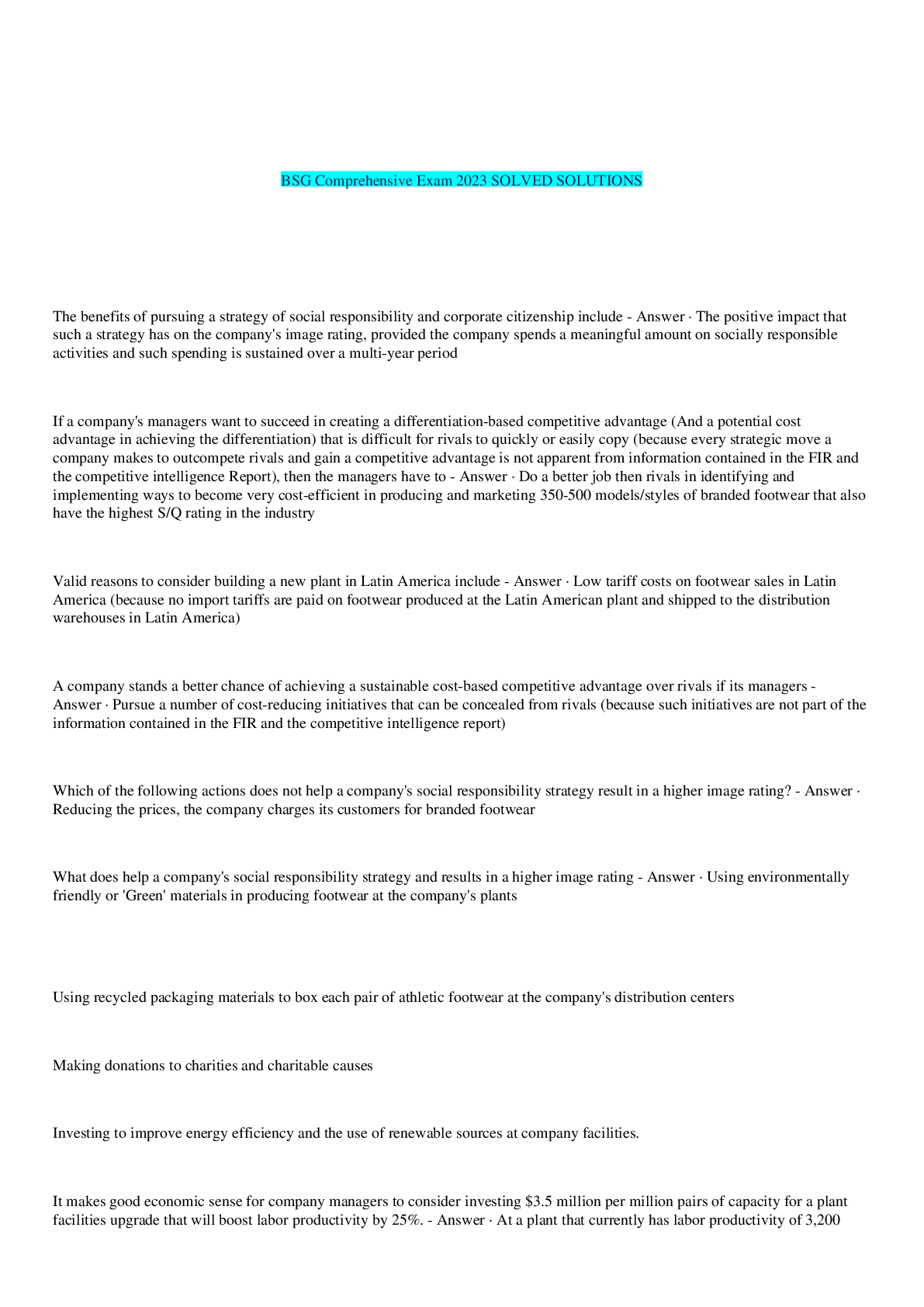



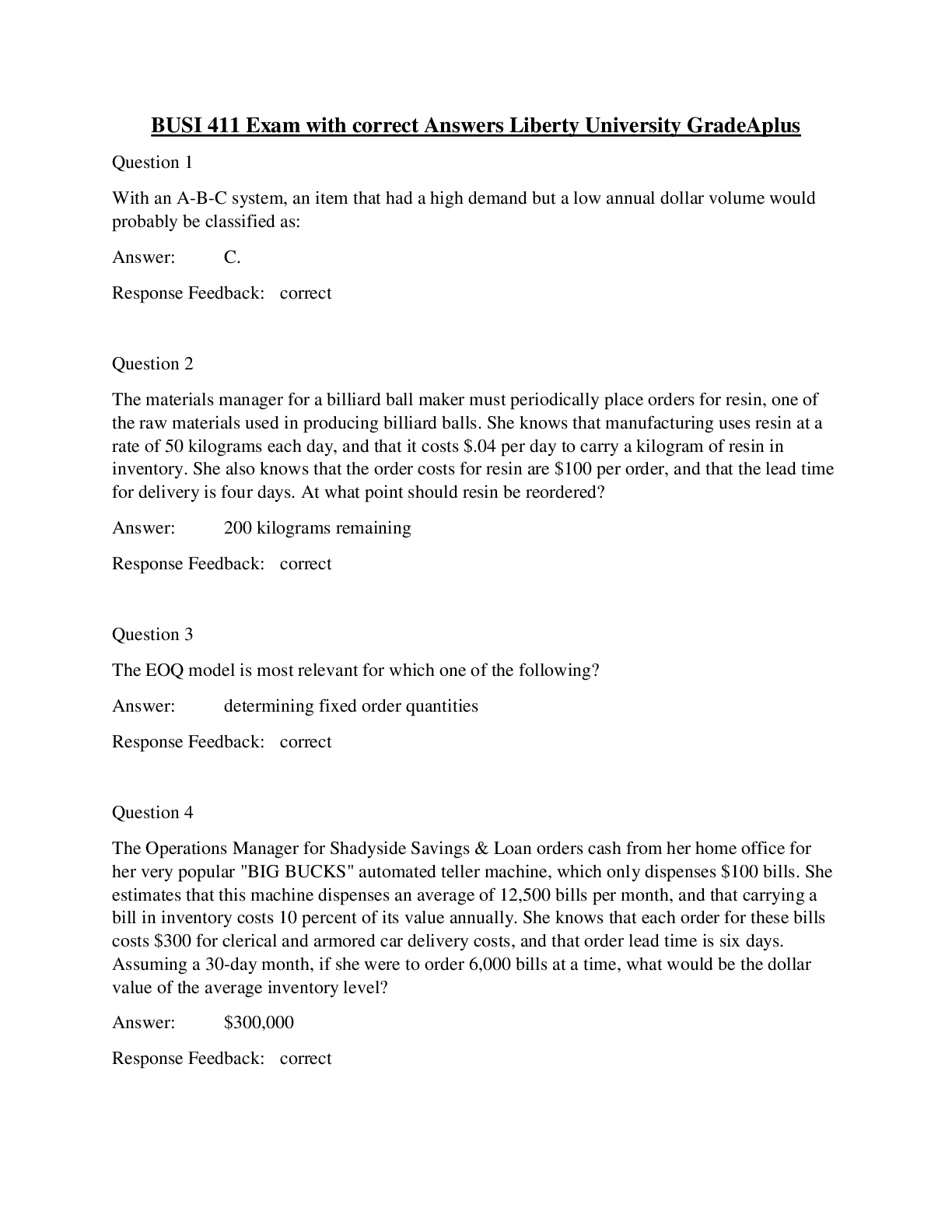



 (1).png)

